Reticence
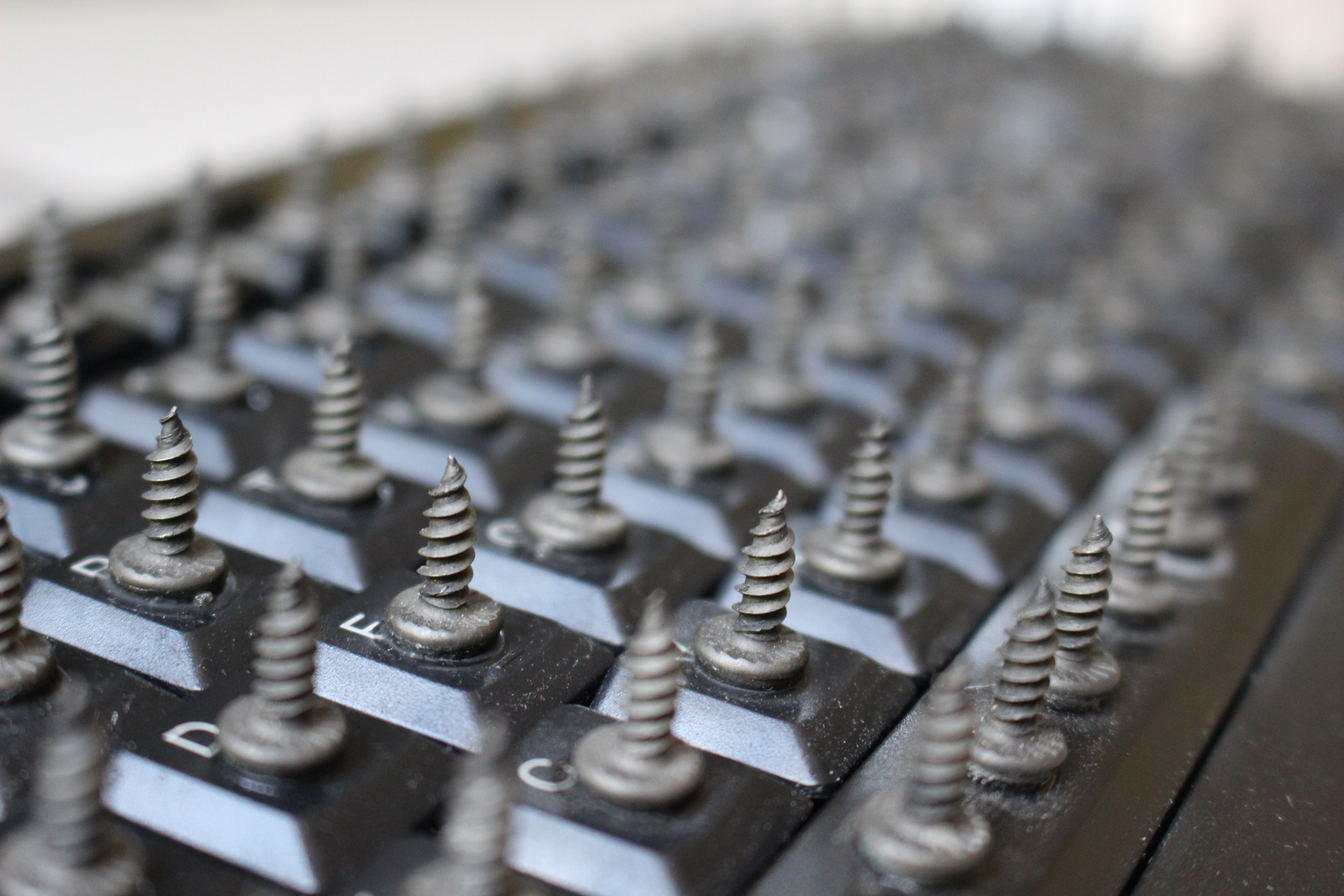
Versions One and Two differ only slightly. The first has screws glued to each key on a keyboard. The second has thin nails that poke through the individual keys. Both function similarly. The spikes are not sharp enough to break the skin, but they make each keystroke clumsy and painful. A writer must search out each key with precision—the standard broad key is reduced to a pinpoint. Each stroke brings new pain as the writer hits different keys with different fingers and further, different parts of a finger. Writing slows to a crawl, and the user is forced to recognize the deeply embodied physicality of the writing assemblage.
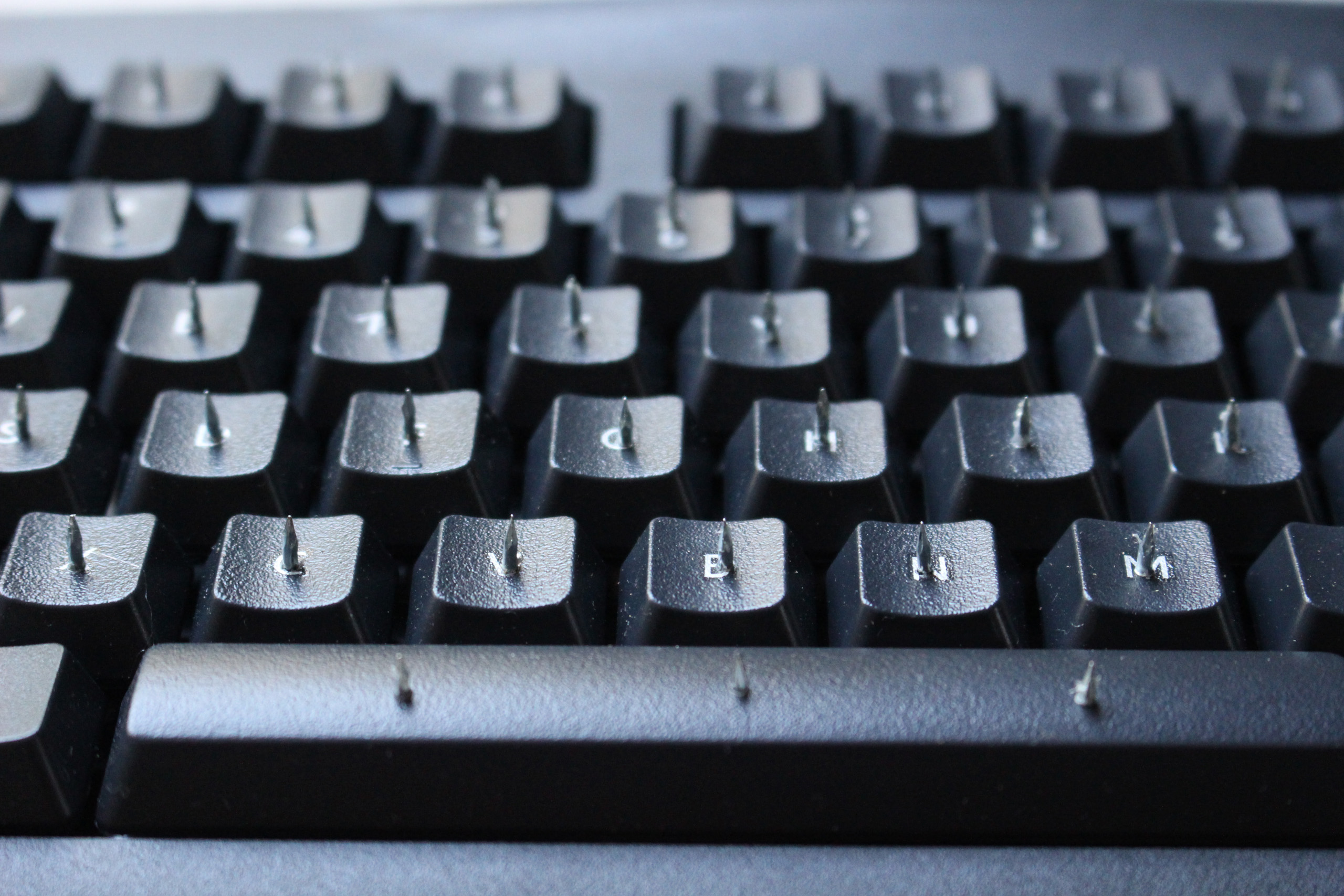
Resistance
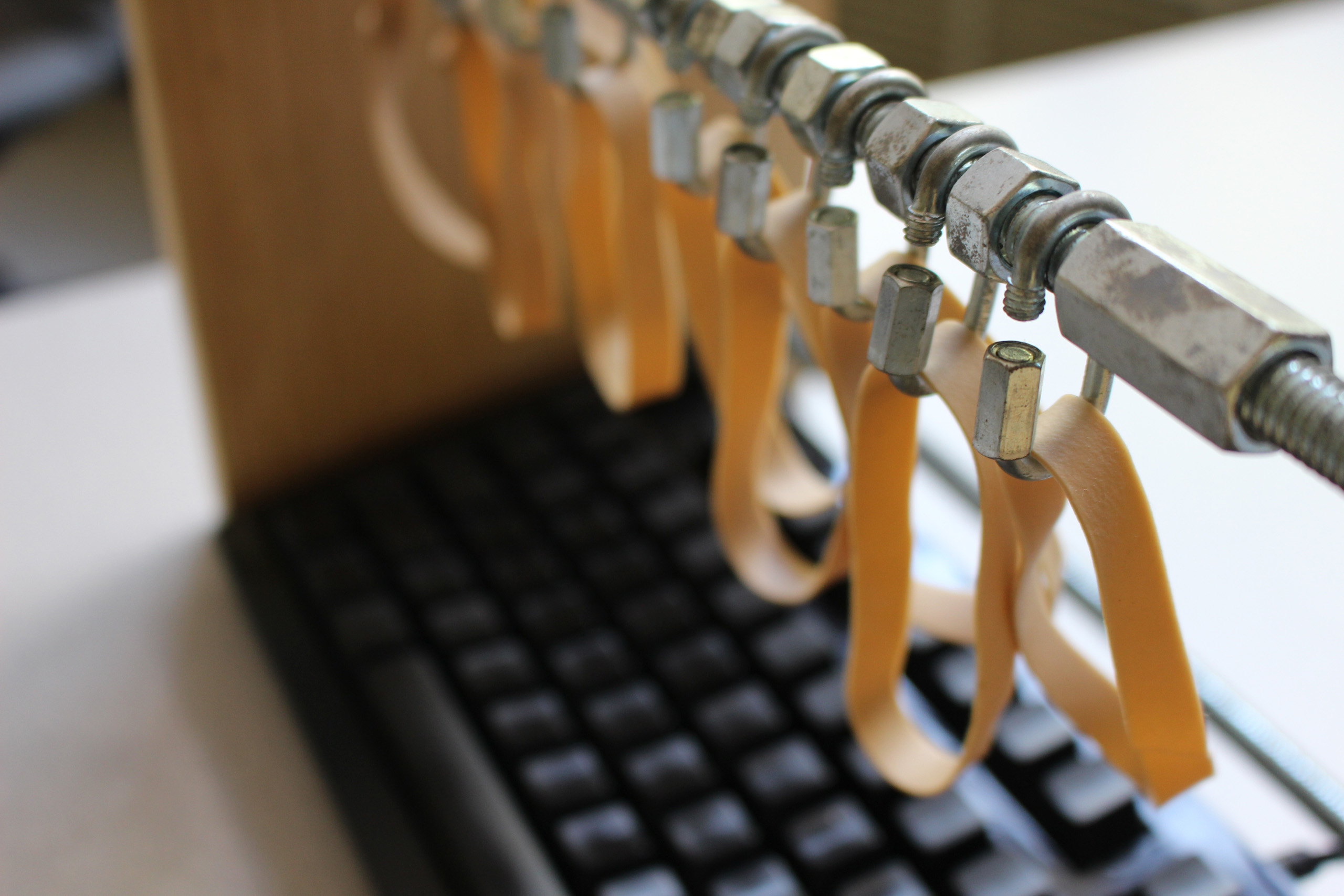
Version one is a structure built of wood, galvanized steel, and rubber. Ten rubber bands are suspended above a user’s keyboard (height is variable). First, a user must negotiate the rubber bands. Pre-writing is a tangled process as she fits each finger into a band. Once entangled, the writer’s fingers are restrained, and writing takes considerable effort. Each key takes different degrees of effort based on the finger the presses it and the distance that finger must travel. Some words come easily, and some with significant effort. The ‘backspace’ key, hit with the user’s little finger is perhaps the most difficult. Writing is slow and exhausting. Between any given word a user is presented with ample time, while she rests, to consider not only the content of her text but the keyboard, the desk, the screen, the chair, the material bodies that structure writing.
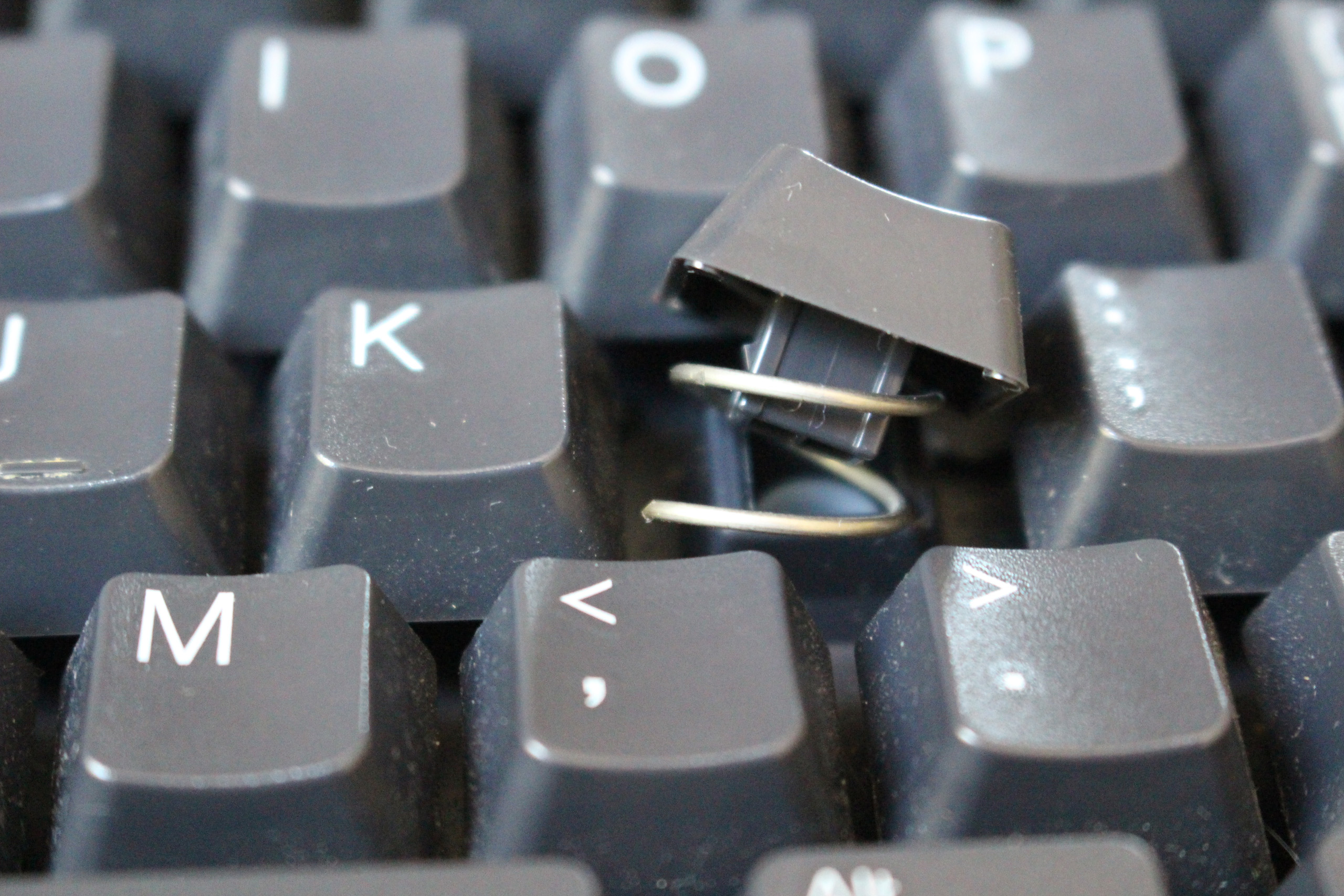
Version two is less obviously physically imposing. Rather than restraining the writer, this keyboard resists. Each key has been fitted with a spring, and each keystroke takes significant force. Fluid writing is impossible, and a writer is reduced to laboriously extruding each word, letter by letter.
Repetition
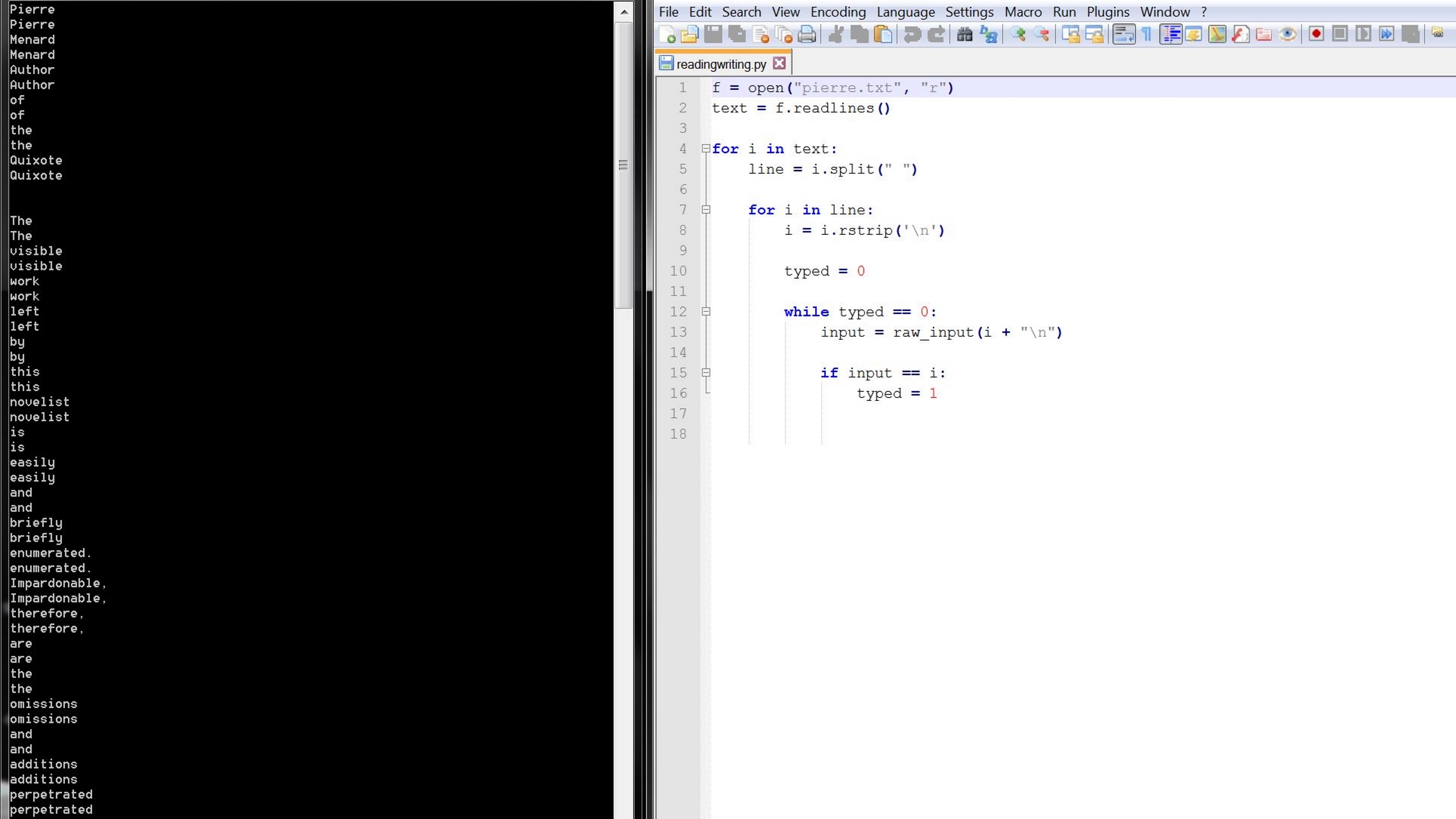
This digital machine, built in python, is focused on the combined process of reading and writing. Repetition presents a single word to the user. To advance the text the reader must write the presented word. In this way a user can only read a text by writing it, literally word by word. Here, reading is mediated by the material act of writing, and each word is repeatedly read as a reader first reads it and then writes it, reads it again while writing. Reading and writing both are slowed way down.
Hedging
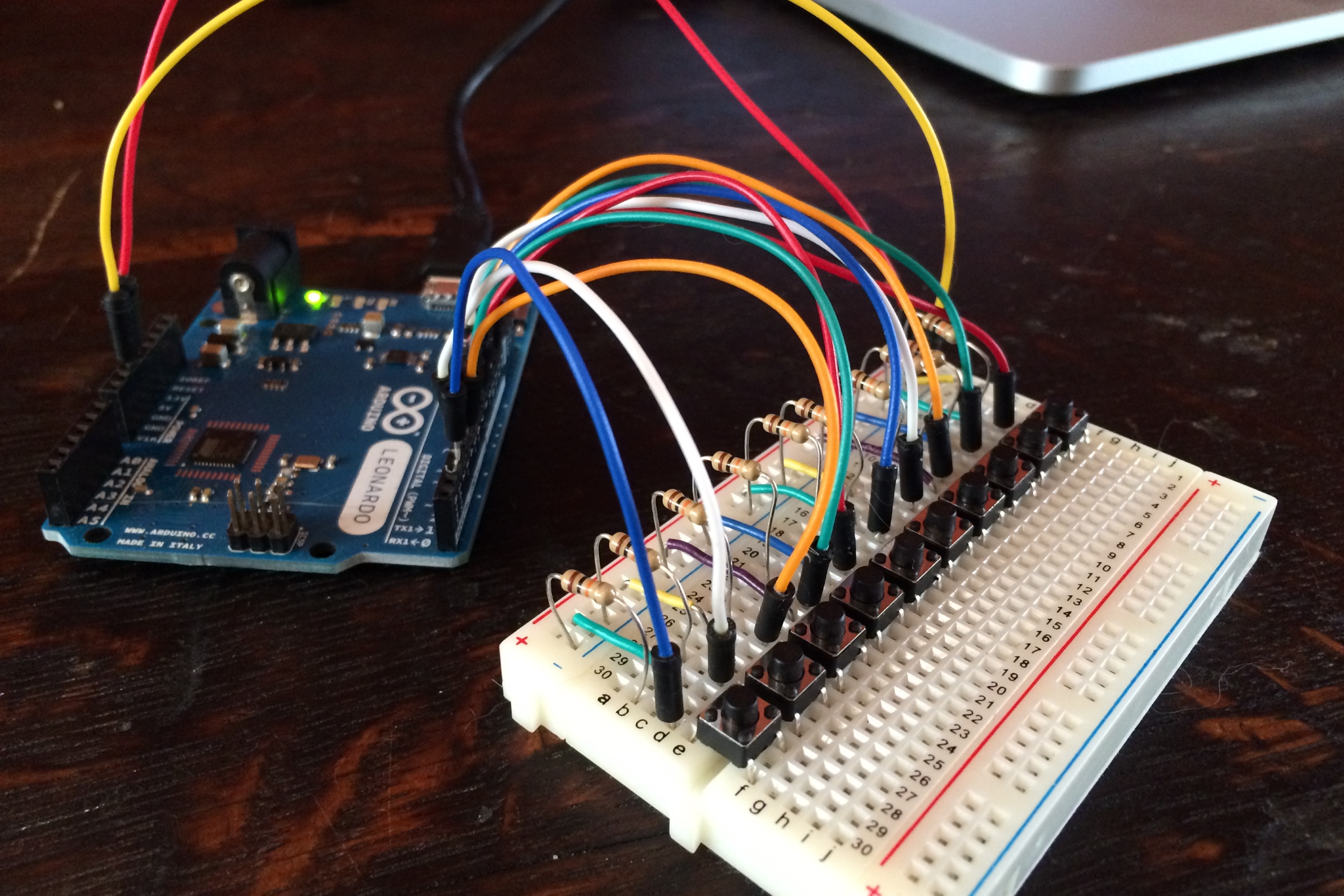
Initially built with an Arduino Leonardo, Hedging allows a user to, at the press of a button, insert hedging phrases—'perhaps,' 'might maybe,' 'according to some people,' parenthesis, ellipses, 'this might be the case,' etc.—into a text. This machine was designed for collaborative writing exercises where one user would be writing normally and another reads over their shoulder and hedges. When the writer edits their text inserted hedges are indistinguishable from written ones. A writer must edit carefully and take into consideration the impact of these hedging phrases. Rather than simply reading and excising them as nervous filler a reader might reexamine her text and reconsider just how precarious any statement is.
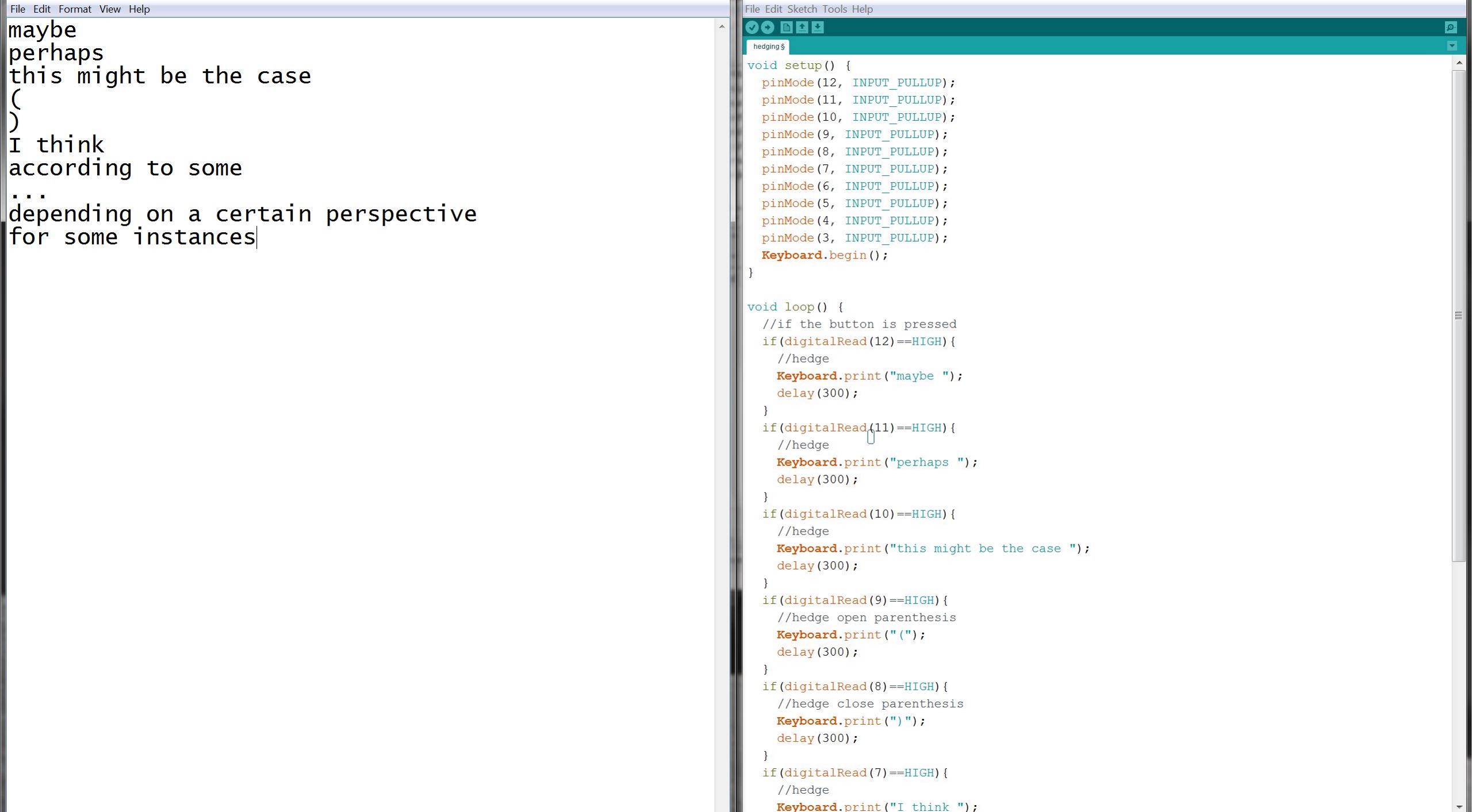
200001
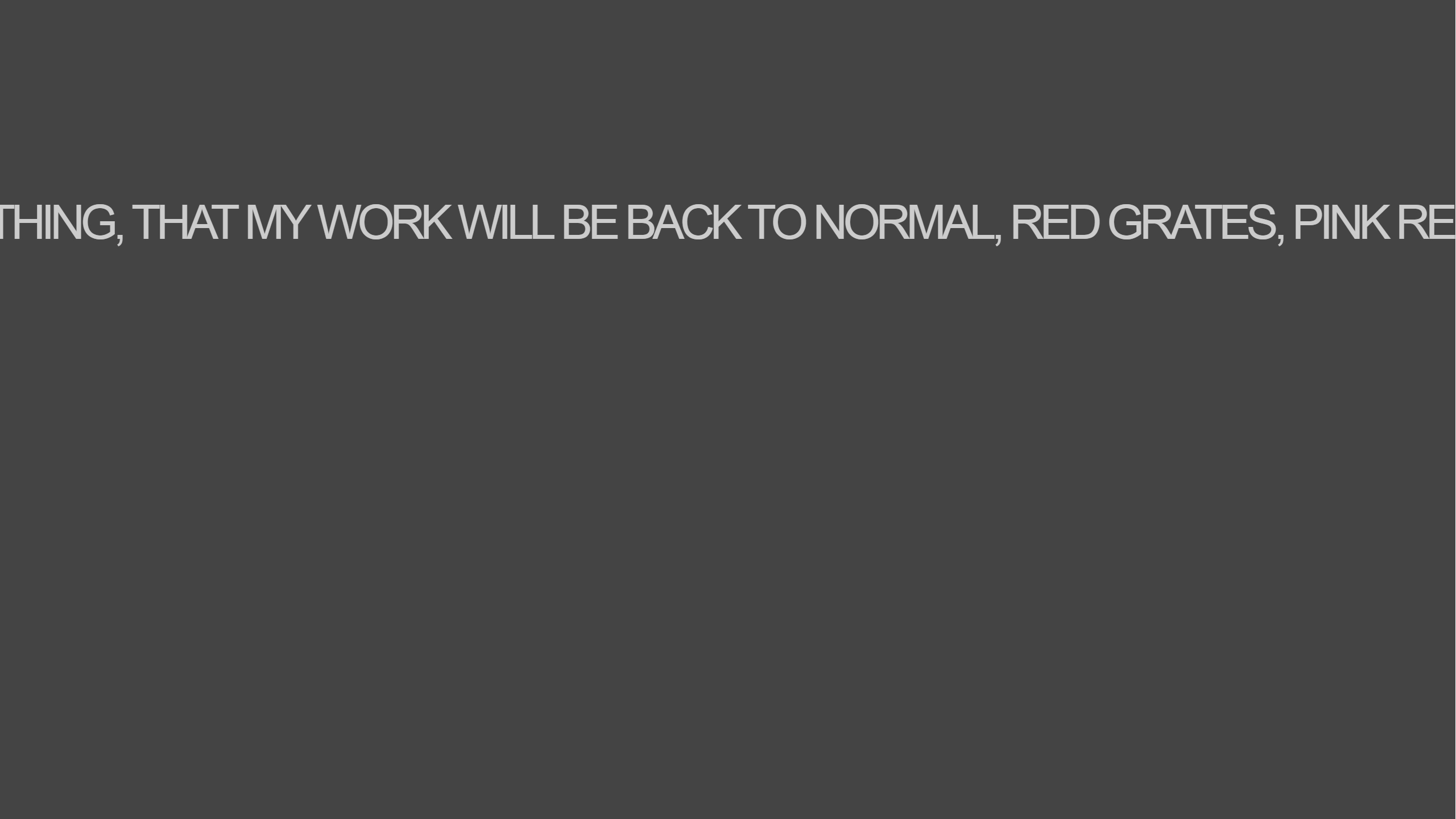
200001 is a piece of e-poetry presented at the 2011 e-poetry festival at SUNY Buffalo. It was built with CSS, HTML, and borrowed and altered Javascript. It flattens roughly 3.5 minutes of 2001: A Space Odyssey into a 15 minute silent scroll of text 200001 pixels long. Every object—verbal, material, non-material, human, and nonhuman—during these 3.5 minutes has been transcribed and presented side by side with equal weight. 200001 can be seen here and is best viewed on a large monitor or projector.